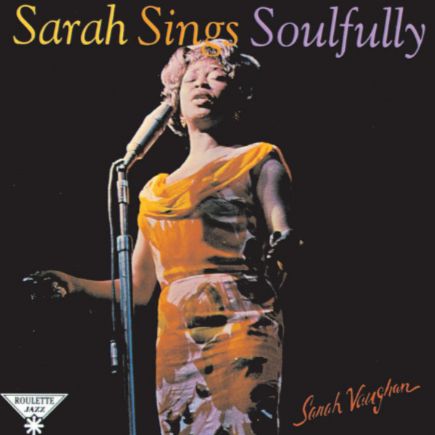‘Round Midnight: l’intimité du jazz moderne
Composée par Thelonious Monk au début des années 1940, ‘Round Midnight s’impose comme l’une des ballades les plus marquantes et les plus interprétées du répertoire jazz. Dès l’introduction, elle installe une ambiance nocturne, à la fois méditative et chargée d’émotion, où se croisent mélancolie et raffinement harmonique.
La ligne mélodique, sinueuse et nuancée, explore des trajectoires inattendues, portées par une architecture harmonique élaborée. Des arrangeurs tels que Cootie Williams ou Bernie Hanighen ont contribué à son évolution, ce dernier ayant notamment participé à l’édition de la version chantée de ‘Round Midnight, qui facilita sa diffusion dès les années 1940.
L’interprétation de Miles Davis au festival de Newport en 1955, dans un arrangement de Gil Evans, fut déterminante: elle joua un rôle clé dans la signature du trompettiste chez Columbia et conféra au morceau une reconnaissance internationale. Depuis, ‘Round Midnight a été repris à travers une diversité de styles et d’approches.
Le titre, évocateur, résume à lui seul l’essence du morceau: une immersion dans l’intimité de la nuit, empreinte de tension dramatique et d’élégance sombre, alors que la complexité harmonique, fondée sur des enchaînements d’accords subtils, offre un terrain riche pour l’improvisation, tout en conservant l’identité poignante du thème.
Sarah Vaughan, l’intimité crépusculaire d’une voix souveraine
Le 29 mai 1963, à Los Angeles, Sarah Vaughan enregistre une version singulièrement introspective de ’Round Midnight pour l’album Sarah Sings Soulfully. Autour d’elle, une formation resserrée — Ernie Freeman (orgue), Carmell Jones (trompette), Teddy Edwards (saxophone ténor) et Milt Turner (batterie) — instaure un climat feutré, presque nocturne, qui sied à merveille à ce chef-d’œuvre de la mélancolie moderne. L’orgue de Freeman, inattendu dans ce répertoire, diffuse une chaleur enveloppante, offrant à Vaughan un écrin harmonique où chaque suspension prend un relief inédit.
La dernière séance chez Roulette de Sarah Vaughan, avant son retour chez Mercury, fut l’une de ses meilleures. La chanteuse aborde le thème avec une gravité maîtrisée: phrasé étiré, glissements délicats, aplomb dans les graves et clarté des aigus. Les interventions de Carmell Jones, fines et mesurées, prolongent cette atmosphère de confidence, tandis que le ténor de Teddy Edwards ajoute un voile de nostalgie urbaine.
Cette interprétation de ’Round Midnight s’impose comme une relecture à contre-courant: moins dramatique que méditative, plus chuchotée que flamboyante. Elle illustre la capacité de Sarah Vaughan à réinventer le standard en profondeur, non par l’esbroufe, mais par une compréhension organique du texte et de l’harmonie.
‘Round Midnight: la intimidad del jazz moderno
Compuesta por Thelonious Monk a principios de los años cuarenta, ‘Round Midnight se impone como una de las baladas más significativas y versionadas del repertorio jazzístico. Desde los primeros compases, establece una atmósfera nocturna, meditativa y cargada de emoción, donde se entrelazan melancolía y refinamiento armónico.
La línea melódica, sinuosa y matizada, recorre trayectorias inesperadas, sostenida por una arquitectura armónica sofisticada. Arreglistas como Cootie Williams y Bernie Hanighen contribuyeron a su evolución; este último participó especialmente en la publicación de la versión cantada de ‘Round Midnight, que favoreció su difusión ya en los años cuarenta.
La interpretación de Miles Davis en el festival de Newport de 1955, arreglada por Gil Evans, fue determinante: desempeñó un papel decisivo en su fichaje por Columbia y dio al tema una proyección internacional. Desde entonces, ‘Round Midnight ha sido interpretada desde una amplia gama de estilos y enfoques.
El título, evocador, resume por sí solo la esencia de la obra: una inmersión en la intimidad de la noche, marcada por una tensión dramática y una elegancia sombría. La complejidad armónica, basada en secuencias de acordes sutiles, ofrece un terreno fértil para la improvisación, sin perder la intensidad expresiva del tema original.
Sarah Vaughan, la intimidad crepuscular de una voz soberana
El 29 de mayo de 1963, en Los Ángeles, Sarah Vaughan grabó una versión singularmente introspectiva de ’Round Midnight para el álbum Sarah Sings Soulfully. A su alrededor, una formación reducida — Ernie Freeman (órgano), Carmell Jones (trompeta), Teddy Edwards (saxofón tenor) y Milt Turner (batería) — instaura un clima amortiguado, casi nocturno, que se adapta de maravilla a esta obra maestra de la melancolía moderna. El órgano de Freeman, inesperado en este repertorio, difunde un calor envolvente, ofreciendo a Vaughan un marco armónico en el que cada suspensión adquiere un relieve inédito.
La última sesión de Sarah Vaughan para Roulette, antes de su regreso a Mercury, fue una de sus mejores. La cantante aborda el tema con una gravedad controlada: fraseo extendido, deslizamientos delicados, aplomo en los graves y claridad en los agudos. Las intervenciones de Carmell Jones, finas y mesuradas, prolongan esta atmósfera de confidencia, mientras el tenor de Teddy Edwards añade un velo de nostalgia urbana.
Esta interpretación de ’Round Midnight se impone como una relectura a contracorriente: menos dramática que meditativa, más susurrada que deslumbrante. Ilustra la capacidad de Sarah Vaughan para reinventar el estándar en profundidad, no mediante la ostentación, sino gracias a una comprensión orgánica del texto y de la armonía.
‘Round Midnight: l’intimità del jazz moderno
Composta da Thelonious Monk all’inizio degli anni Quaranta, ‘Round Midnight si afferma come una delle ballate più significative e reinterpretate del repertorio jazz. Fin dall’introduzione, crea un’atmosfera notturna, meditativa e profondamente emotiva, in cui si fondono malinconia e raffinatezza armonica.
La linea melodica, sinuosa e sfumata, percorre direzioni imprevedibili, sostenuta da una struttura armonica ricercata. Arrangiatori come Cootie Williams e Bernie Hanighen hanno contribuito alla sua evoluzione; quest’ultimo ha partecipato in particolare alla pubblicazione della versione cantata di ‘Round Midnight, che ne favorì la diffusione già dagli anni Quaranta.
L’interpretazione di Miles Davis al festival di Newport nel 1955, su arrangiamento di Gil Evans, fu determinante: giocò un ruolo decisivo nella firma del trombettista con Columbia e offrì al brano un riconoscimento internazionale. Da allora, ‘Round Midnight è stata riproposta in una vasta gamma di stili e approcci.
Il titolo, altamente evocativo, riassume l’essenza stessa del brano: un’immersione nell’intimità della notte, segnata da tensione drammatica ed eleganza oscura. La complessità armonica, costruita su progressioni di accordi sottili, costituisce un terreno ricco per l’improvvisazione, pur mantenendo l’intensità espressiva del tema.
Sarah Vaughan, l’intimità crepuscolare di una voce sovrana
Il 29 maggio 1963, a Los Angeles, Sarah Vaughan incise una versione singolarmente introspettiva di ’Round Midnight per l’album Sarah Sings Soulfully. Attorno a lei, una formazione raccolta — Ernie Freeman (organo), Carmell Jones (tromba), Teddy Edwards (sassofono tenore) e Milt Turner (batteria) — instaura un clima ovattato, quasi notturno, che si addice alla perfezione a questo capolavoro della malinconia moderna. L’organo di Freeman, inatteso in questo repertorio, diffonde un calore avvolgente, offrendo a Vaughan una cornice armonica in cui ogni sospensione acquista un rilievo inedito.
L’ultima sessione di Sarah Vaughan per Roulette, prima del suo ritorno alla Mercury, fu una delle sue migliori. La cantante affronta il tema con una gravità misurata: fraseggio disteso, scivolamenti delicati, sicurezza nei gravi e chiarezza negli acuti. Gli interventi di Carmell Jones, fini e misurati, prolungano questa atmosfera di confidenza, mentre il tenore di Teddy Edwards aggiunge un velo di nostalgia urbana.
Questa interpretazione di ’Round Midnight si impone come una rilettura controcorrente: meno drammatica che meditativa, più sussurrata che flamboyant. Illustra la capacità di Sarah Vaughan di reinventare lo standard in profondità, non attraverso l’esibizione, ma mediante una comprensione organica del testo e dell’armonia.
‘Round Midnight: the intimacy of modern jazz
Composed by Thelonious Monk in the early 1940s, ‘Round Midnight stands as one of the most iconic and frequently interpreted ballads in the jazz repertoire. From the opening bars, it sets a nocturnal mood that is both meditative and emotionally charged, blending melancholy with harmonic sophistication.
The melodic line, winding and nuanced, follows unexpected paths supported by a refined harmonic framework. Arrangers like Cootie Williams and Bernie Hanighen contributed to its development; the latter notably helped publish the vocal version of ‘Round Midnight, which facilitated its dissemination in the 1940s.
Miles Davis’s performance at the Newport Jazz Festival in 1955, arranged by Gil Evans, proved pivotal: it played a key role in his signing with Columbia and brought the piece worldwide recognition. Since then, ‘Round Midnight has been revisited through a wide variety of styles and interpretations.
The evocative title alone captures the spirit of the composition: an immersion into the intimacy of night, marked by dramatic tension and somber elegance. Its harmonic complexity, built on subtle chord progressions, offers fertile ground for improvisation while preserving the poignant identity of the theme.
Sarah Vaughan, the twilight intimacy of a sovereign voice
On May 29, 1963, in Los Angeles, Sarah Vaughan recorded a singularly introspective version of ’Round Midnight for the album Sarah Sings Soulfully. Around her, a tight ensemble — Ernie Freeman (organ), Carmell Jones (trumpet), Teddy Edwards (tenor saxophone), and Milt Turner (drums) — establishes a muted, almost nocturnal atmosphere that suits this masterpiece of modern melancholy perfectly. Freeman’s organ, unexpected in this repertoire, diffuses a warm, enveloping glow, offering Vaughan a harmonic setting in which every suspension takes on unprecedented relief.
Sarah Vaughan’s final session for Roulette, before her return to Mercury, was one of her finest. The vocalist approaches the theme with measured gravity: elongated phrasing, delicate slides, grounded lower register, and clarity in the upper. Carmell Jones’ interventions, fine and measured, extend this atmosphere of confidence, while Teddy Edwards’ tenor adds a veil of urban nostalgia.
This interpretation of ’Round Midnight stands as a counter-current rereading: less dramatic than meditative, more whispered than flamboyant. It illustrates Sarah Vaughan’s ability to reinvent the standard in depth, not through showmanship, but through an organic understanding of the text and the harmony.


